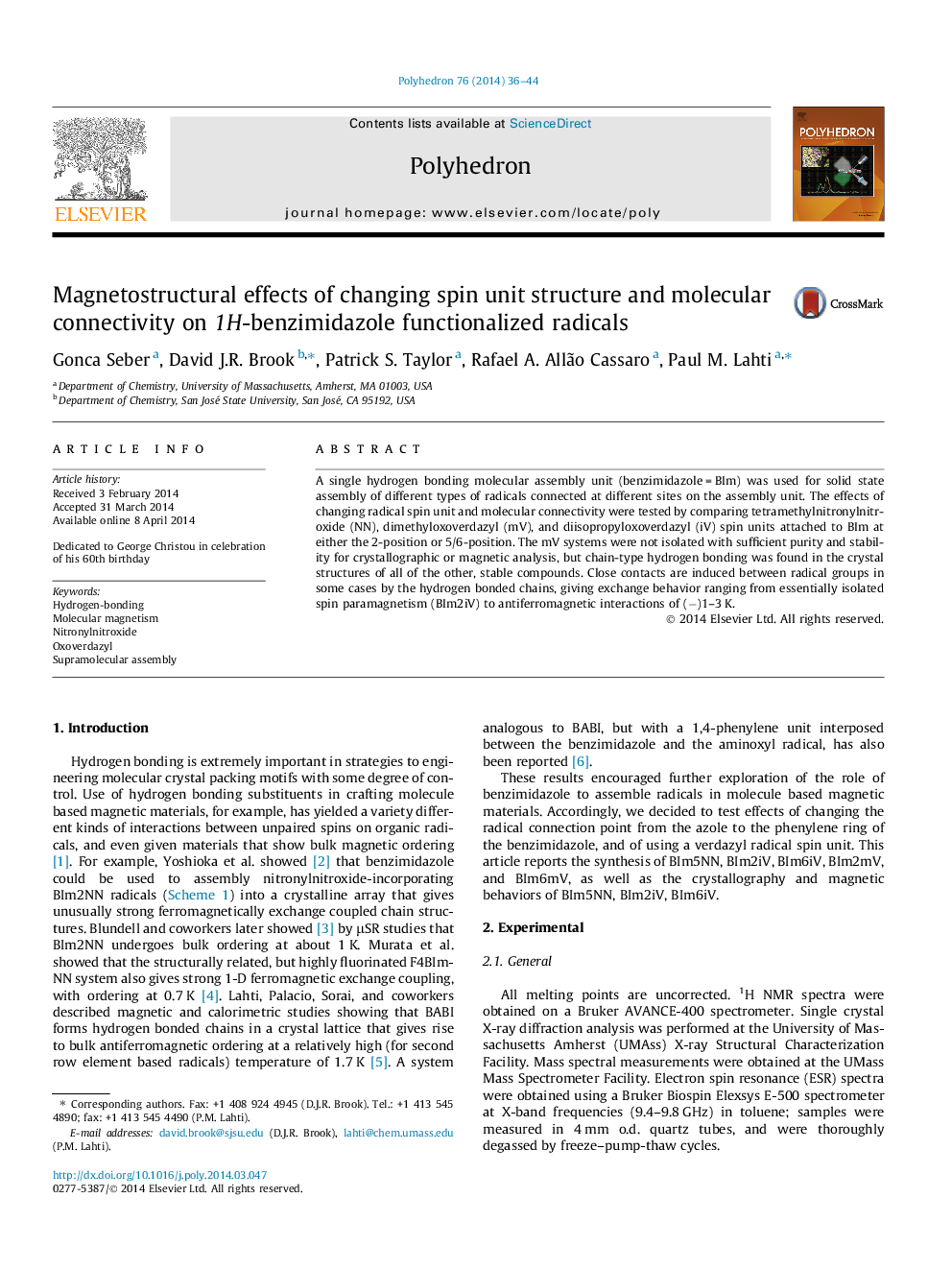| Article ID | Journal | Published Year | Pages | File Type |
|---|---|---|---|---|
| 1335333 | Polyhedron | 2014 | 9 Pages |
A single hydrogen bonding molecular assembly unit (benzimidazole = BIm) was used for solid state assembly of different types of radicals connected at different sites on the assembly unit. The effects of changing radical spin unit and molecular connectivity were tested by comparing tetramethylnitronylnitroxide (NN), dimethyloxoverdazyl (mV), and diisopropyloxoverdazyl (iV) spin units attached to BIm at either the 2-position or 5/6-position. The mV systems were not isolated with sufficient purity and stability for crystallographic or magnetic analysis, but chain-type hydrogen bonding was found in the crystal structures of all of the other, stable compounds. Close contacts are induced between radical groups in some cases by the hydrogen bonded chains, giving exchange behavior ranging from essentially isolated spin paramagnetism (BIm2iV) to antiferromagnetic interactions of (−)1–3 K.
Graphical abstract1H-Benzimidazole substituted with nitronylnitroxide (5-position, NN) or oxo-verdazyl (2- or 6-positions, iV) radicals form 1-D hydrogen bonded chains in crystalline solids; the NN variant incorporates H2O in the chains. The chain motifs bring the radical spin units into different degrees of proximity to give 1-D antiferromagnetic exchange interactions up to J/k ≈ (−)2–3 K where 6-iV ⩾ 5-NN > 2-iV in order of magnitude.Figure optionsDownload full-size imageDownload as PowerPoint slide
